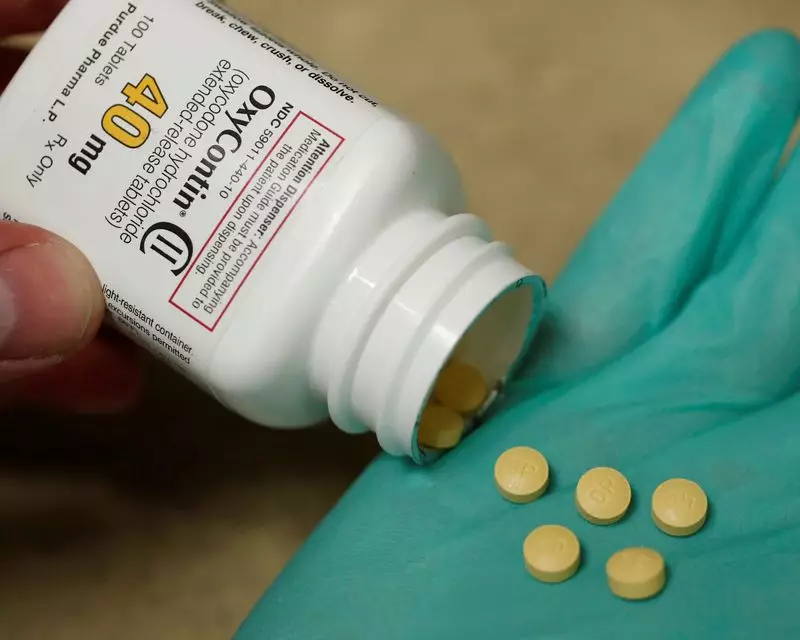The ongoing saga surrounding Purdue Pharma and its opioid crisis ramifications has taken another turn with the announcement of a proposed $7.4 billion settlement. The road to this settlement has been marked by a complex web of lawsuits, bankruptcy proceedings, and contentious negotiations that reflect not only the toll of Purdue’s actions but also the broader implications for the opioid epidemic in the United States.
Purdue Pharma, the controversial manufacturer of OxyContin, filed for Chapter 11 bankruptcy in 2019 after facing an avalanche of lawsuits rooted in claims that it contributed to the opioid crisis through deceptive marketing practices. The company’s actions have been widely criticized for fueling addiction rates that led to widespread devastation in communities across the nation. The victims of this crisis, including individuals and local governments, have sought accountability, emphasizing the need for reparations from Purdue and its owners, the Sackler family.
The legal battles have been relentless and complex. Various stakeholders, including states, local governments, and creditors, have all sought redress. This multifaceted landscape has made it challenging for Purdue to navigate its bankruptcy proceedings while simultaneously trying to resolve the multitude of claims against it. The recent proposal, heralded by state attorneys general from various jurisdictions, offers a glimpse of hope for those affected by the opioid epidemic, but it is far from a definitive resolution.
The proposed settlement has received backing from 15 states, indicating a significant potential for broad support to forge a path forward in the bankruptcy proceedings. However, Purdue’s attorney Benjamin Kaminetsky has cautioned that while the company is “almost there,” concrete agreement remains to be finalized. The deal aims to conclude Purdue’s protracted bankruptcy saga but faces scrutiny from remaining creditors and legal entities who seek a more robust accountability mechanism for Purdue and the Sacklers.
The settlement has been structured as a means to provide funds to states and affected communities, potentially bringing some measure of relief to those harrowed by the repercussions of the opioid epidemic. However, the specter of uncertainty looms large, with many factors influencing the acceptance and implementation of the agreement. Critical voices within the legal community maintain concerns about the adequacy and fairness of the proposed terms, questioning whether it serves the interests of all affected parties.
U.S. Bankruptcy Judge Sean Lane, tasked with overseeing Purdue’s bankruptcy case, has offered cautious optimism about the advancements made thus far. While acknowledging progress, the approval of the settlement is not guaranteed, nor is the timeline clear. Complicating this is the U.S. Supreme Court’s recent decision, which has further influenced the legal landscape, denying sweeping legal protections to the Sacklers and opening the door for continued litigation against them.
This judicial guidance is crucial, as it underscores the importance of stakeholder involvement in shaping the ultimate outcomes of the settlement. Many voices from within the communities affected by the opioid crisis must have a seat at the table to ensure that the terms of the settlement adequately reflect the needs and desires of those most impacted.
As Purdue Pharma endeavors to solidify support for its proposed settlement, the road ahead remains fraught with challenges. While the proposed $7.4 billion offer signifies hope for recovery and restitution, it does not eliminate the possibility of exceptional litigation against the Sacklers. States like West Virginia retain the ability to opt out, highlighting the fractures in consensus even among those who initially supported the settlement.
Furthermore, Judge Lane has emphasized the necessity for claimants to understand what benefits could come from this bankruptcy case, as they weigh their options against potential individual lawsuits. The matter of transparency is crucial in fostering trust among stakeholders, who have endured a long and painful journey towards justice.
While the $7.4 billion settlement proposed by Purdue Pharma marks a significant chapter in the long-standing opioid crisis narrative, it also serves as a reminder of the complexities and fragilities inherent in seeking accountability in such a vast and devastating public health crisis. As the situation continues to evolve, ongoing negotiations and judicial oversight will be key in determining whether this proposal ultimately fulfills the aspirations of those affected by Purdue’s actions.

